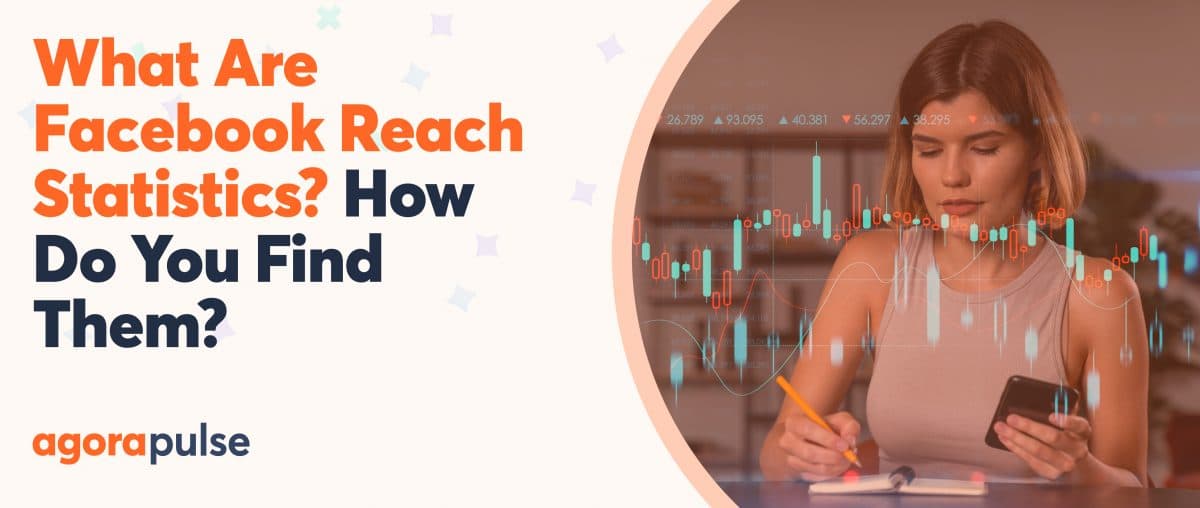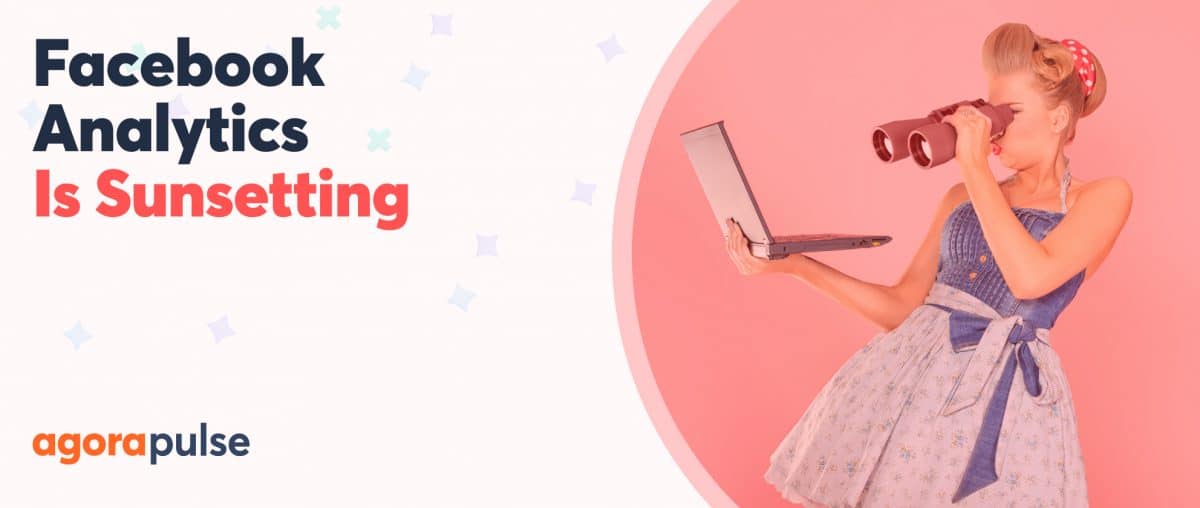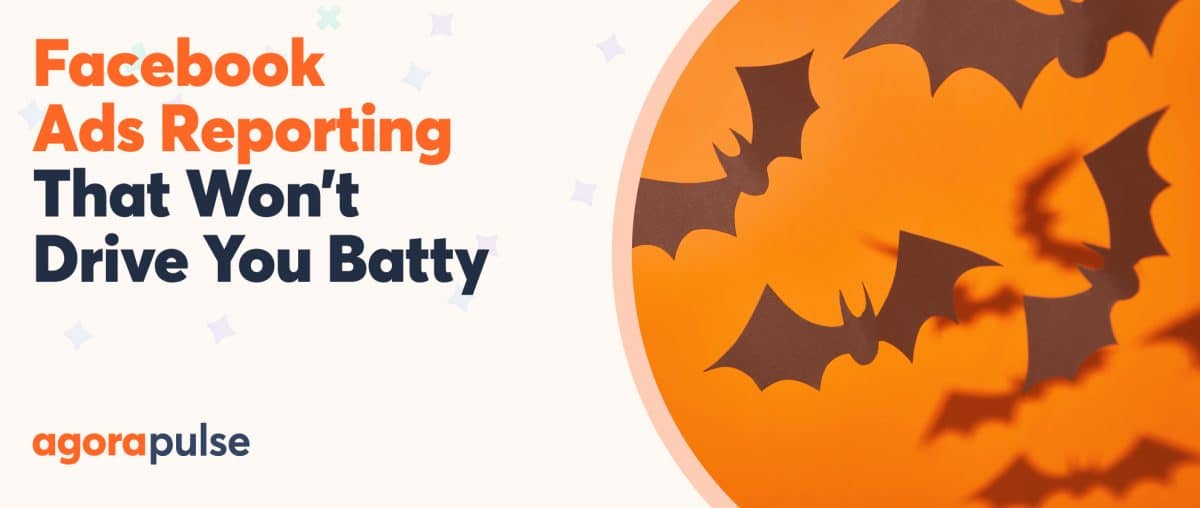A different version of this article has recently been published on socialmediaexaminer.com
Have you been worried about recent changes in the way your content reaches your fans on Facebook Statistics? I’m going show you why some pages achieve more visibility than others, and give you all the tips you need to understand and improve your own reach metrics.
Before I start, don’t hesitate to benchmark your main Facebook metrics with our Free Facebook Page Barometer, it will help you understand how your page performs! Most screenshots on this article come from the Barometer.
1 – What is Facebook reach?
Facebook’s insights are filled with a tremendous amount of metrics, and they all begin with reach. Why? Your reach is the number of unique people who saw your content, so everything else (engagement- likes, comments, clicks, negative feedback) really depends on how many people saw the content in the first place.
There are several types of reach, let’s take a quick look at each:
All reach metrics are not created equal (post reach vs. page reach)
There are two ways to look at reach as a Facebook page admin: page level and post level.
Post level reach is the number of people who saw a specific post in their newsfeed. Page level reach is the number of people who saw any of your pieces of content during a given period of time (daily, weekly or monthly). These two reach metrics can be deceiving if they’re not understood. You may have a very high reach per post, but a low page reach if you don’t post very often. The opposite is also true, even with a low reach per post, you can still achieve a pretty high page reach if you post very often (like 5 times a day or more). You’ll see a good example of this at the end of this post.
When considering reach, ask yourself if you’re aiming to have each of your individual posts seen by the most fans, or, is your content a way to make sure your brand appears before your fans on a regular basis?
Organic, viral, paid and Fan reach- what do they all mean?
Posts and pages both have three main subcategories of reach: Organic, Viral and Paid reach.
Organic reach is the reach Facebook gives you for free. For the most part, Organic reach happens with your fans, in the newsfeed. There are other possibilities, such as random users visiting your page, but these are insignificant compared to newsfeed views by fans.
Viral reach consists of the people who see your content because someone else created a story about it. It’s linked to Organic reach because someone in your organic circle had to like it, comment on it, or share it for other people to see. Viral reach can also be a branch off of paid reach if a targeted user creates a story on one of your sponsored posts.
Viral reach is still displayed in your Excel download when you select the “old” insights format, but it is a subsection of Organic reach in the new version of insights. Expect to see it totally disappear from your insights and the Facebook API soon. Facebook has decided to go for simplicity rather than detail.
Viral reach is still an interesting metric, but since it’s going away, just get used to tracking Organic as it will be the only metric available. At the end of the day, it’s probably not such a bad thing. Only the “experts” have been delving that deep into their analytics. Organic and Paid will be the remaining 2 metrics available.
Paid reach is pretty easy to understand (you paid for it, so you know where it came from). Fan reach and Paid Fan reach are the last two reach metrics to be found in your Excel export- Paid Fan reach being a subset of Fan reach. If you pay to promote your posts, your Fan reach is going to be much bigger than your standard Organic reach (you’re going to reach more of your fans if you pay to do so).
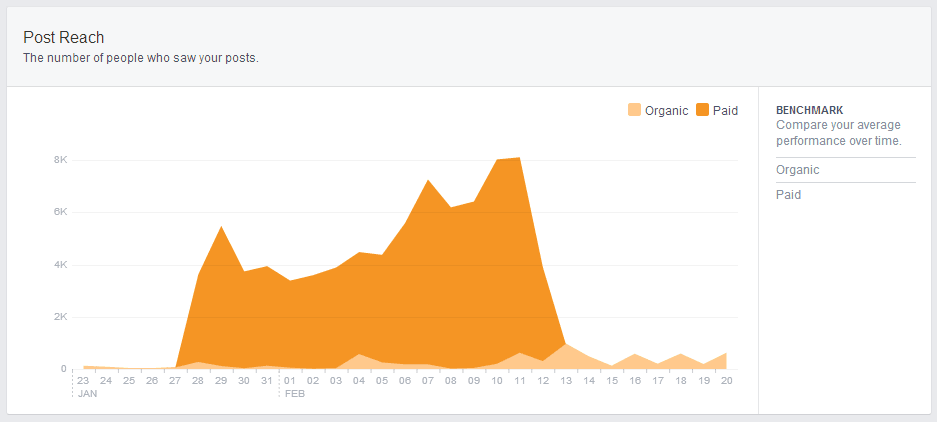
In the new insighs (as well as in the new version of the Excel download), you will only see Organic and Paid reach for page and posts. Fan and Paid Fan reach, however, is still available in the new version of the Excel download.
2 – Finding the right metric to benchmark against your reach
Most people have been benchmarking their reach against their total number of fans. So have I! When looking at any given post, I’ve checked the number of people reached and compared it to my total number of fans, ending up with a percentage anywhere between 5 and 15%.
But, that’s no longer the best way of looking at it. Since Facebook released its new insights in the fall of 2013, we now have access to the number of our fans who are online at any given point in time. A page post lifespan rarely exceeds 2 to 3 hours. Given that, we ought not benchmark against the total number of fans, but rather the total number of fans who were on Facebook at that time.
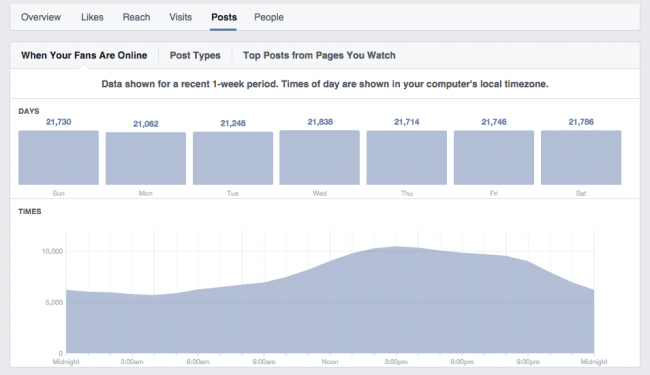
At 3PM on any given day, only an average of 3,620 of our 9,000 fans will be online. As we shouldn’t expect to reach fans who are not logged in Facebook at that time, the percentage of fans reached by a post at that time should not take our total number of fans into account, but only those who can actually see it.
I published a post at 3PM today, around 3,500 of my fans were online. So, if this post reaches 600 people, I shouldn’t look at it as 6.3% of my page’s fans (9,500 fans in total) but rather 17% of the fans who were online (reachable) when I posted it! This may sound like a technical detail, but it’s not when you’re explaining how your page is performing to a boss or client. These are the results your hard work is producing!
Remember, benchmarking a reach metric against the total number of fans will always make your performance look worse than it actually is. 😉
3 – What’s happened to your Facebook reach?
The buzz
In December, a couple of blog posts revealed a big drop in organic reach for the pages they were managing. And another post from adage revealed a “leaked” deck from Facebook stating that pages should expect their reach to continue decreasing and be ready to pay for visibility in the newsfeed. The social media ecosystem and blogosphere was set. on.. fire…
Not a single day passed in December without an exclusive new blog post on the subject. Some were condemning Facebook for contriving sneaky new ways to steal their money. Others were defending the Facebook’s efforts at improving the quality of content distributed in the newsfeed.
Some of you have reported a big drop, some a slight drop, and some have not noticed a difference. I’m among those who have not seen a drop in average post reach in 2013. It’s been pretty steady, around 11 to 12% all year long. And, our page is not one of the “sexy” ones, it’s a typical B to B page, no kittens, heartwarming causes or political issues.
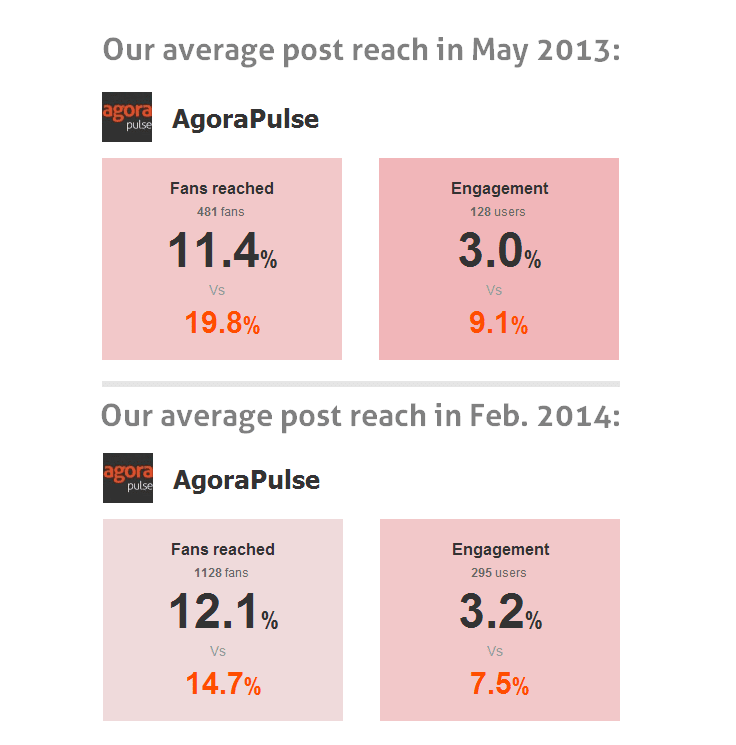
When comparing our average post reach in May, 2013 and February, 2014, the figures are pretty steady.
However, I have seen a drop on some of the pages I monitor between December 1st and today (see the graph below).
The reality
On December 20, I looked at the average data for more than 6,000 pages of all sizes and all industries. There had been a constant decline for the previous 6 months, but no noticeable drop in December. Then, I discovered an interesting trend. Here’s the breakdown:
Pages with a high ‘per post’ engagement rate have been the least affected (if affected at all)
Pages that have a high engagement rate along with a high negative feedback score (reported as spam) are more affected
Pages with a very low engagement rate have been affected the most.
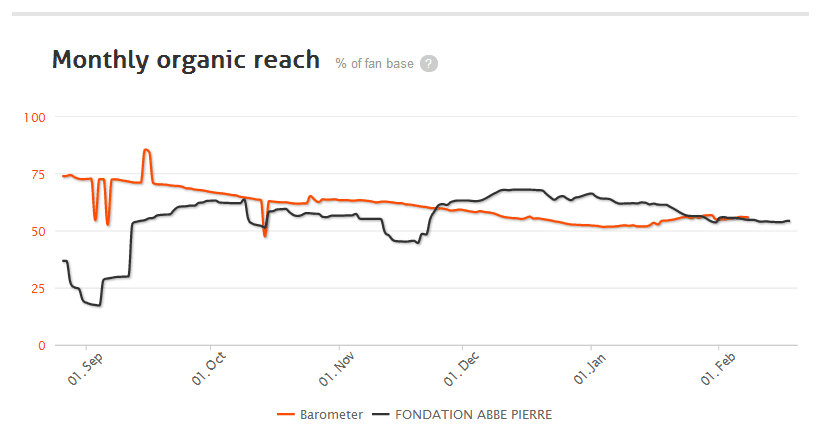
During the last 6 months, the average monthly organic reach has declined from 73% of to 55% of fanbase (orange graph). As you can notice, no significant drop in December for the average. However, that average decline has not affected every page. In this example, the black graph represents the evolution of a nonprofit page I manage and its monthly organic reach has increased during the same period. That page has a very high per post engagement and very low negative feedback.
The type of content published has also had an impact. Photo posts have been affected the most, so if you post a lot of photos and have a low engagement rate, you’re probably suffering more than the average.
4 – Are other social networks really the best alternative to get more social reach?
After the Facebook reach drop buzz was ignited in December, we saw a lot of people claiming Facebook was a fraud and that it was time to move on to other social networks, Google+ being the lead contender. This emotional reaction was inherently wrong on all levels. Here’s why:
– Other social networks don’t provide any kind of reach metric. Facebook is the only social network transparent enough to provide a reach metric. No other social network does. When they do provide statistics, they’re nothing close to the breadth of stats Facebook has given us access to.
– Facebook is an evil publicly listed company that only wants our money– a very common rant among the self- pitying disgruntled class. Do you think Google or Twitter (another publicly listed company) are acting as angelic non-profits with no interest in monetizing us and our data? Google is actually far more “evil” when it comes to changing its algorithms (panda, peguin, hummingbird, etc.) as well as the rules allowing for free traffic with SEO. Then, you pay for adwords when your free ranking goes dark. Google’s changes to its search algorithm have been far more damaging to online businesses than Facebook’s tweaks on edgerank.
– Facebook, Google+, Instagram, and Twitter are never an “or” alternative They are different and complementary, not opposed to each other. Facebook has one of the best targeting options for businesses. For some of us, leaving Facebook in order to rely solely upon Google adword’s targeting capabilities would be business suicide. Look at Facebook as a component of your strategy, not the whole thing. If most of your audience is on Pinterest, or Google +, focus more energy there, but why leave the place where the people you need to reach are spending all their time?
5 – Is paying for Facebook reach such a bad investment?
Paying Facebook for exposure will, for some, become a necessity. Is this such a bad thing?
First, make a distinction between the “casual” content and the “business worthy” content you post. Photos from our latest speaking gig at a conference, videos of fun things we do at the office and quick news updates about recent Facebook changes or features are all relevant and good, but should I pay to get more exposure for them? Nah. This is the free visibility Facebook offers and I’m happy it can reach 10% of my fan base (or 25% of my fans online!) without much effort. This isn’t going to impact my bottom line if it’s 20% more or less than what it is today.
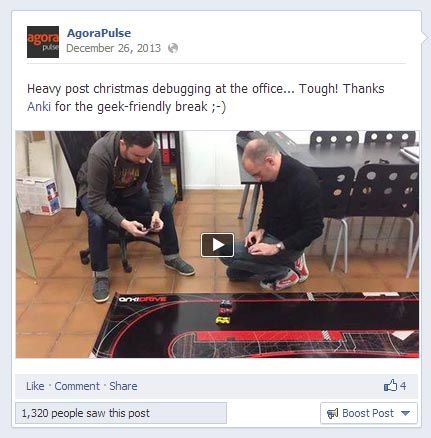
When we post news about fun stuff we do at the office (here, playing with Anki drive!), we don’t really care if it reaches a big proportion of our fans. We are just not willing to pay to increase reach for that kind of post. It’s actually OK if only our most active fans see that.
I also publish content from our blog. The goal here is to generate more visibility to a piece of content I’ve spent a day or two to craft. Is it worth it to pay $30 or 50 to make sure 12 hours of my hard work get seen by 9,000 people instead of 1,000? Hell yes! Twelve hours of my work are worth 30 times this, why waste them to save $30 or $50? Nonsense.
Sometimes I publish content announcing a new product, new features, a new e-book or webinar… etc. The type of content I can really track for short-term ROI (leads or revenues). Am I happy to pay $100 or $150 to generate 300 or 400 hot qualified leads? Or 10 new subscribers with a lifetime value of $400. You bet! Actually, for this kind of content, I haven’t find a more affordable way to generate ROI with PPC, and I’ve tried a LOT of options.
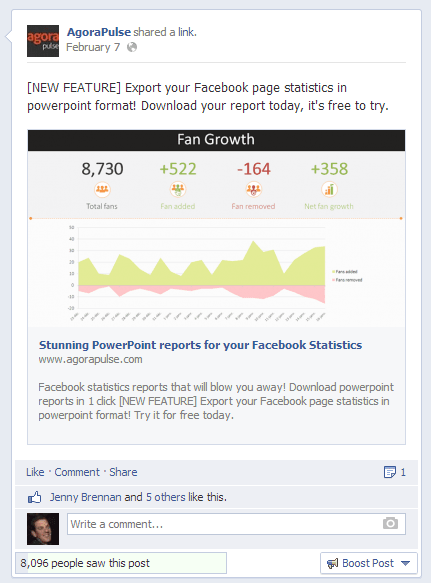
When posting about a new product or feature that can generate new clients, we are definitely looking to pay for more reach.

And we do measure return on Investment on these sponsored post. In this example, the cost to acquire a new customer for some of these sponsored posts was between $20 and $30 which is around 10% of our average revenue per customer. Pretty good return on investment as far as I am concerned.
So, should you be concerned about the need to pay to increase your content visibility? Not really. Some content doesn’t deserve being paid for. But, some does. The return you’ll receive on your investment for the good stuff is easy to get and easy to measure.
6 – What are the best tactics to keep Facebook beneficial in 2014?
Post more often
Pages that post often (3 times a day up to 30 times a day) get very high page reach metrics, and much more brand awareness than pages that only post once a day or less. To be frank, I’ve lately been in the second category.
Posting more often, and at different times of the day, is your best tactic to increase your overall reach and brand awareness.
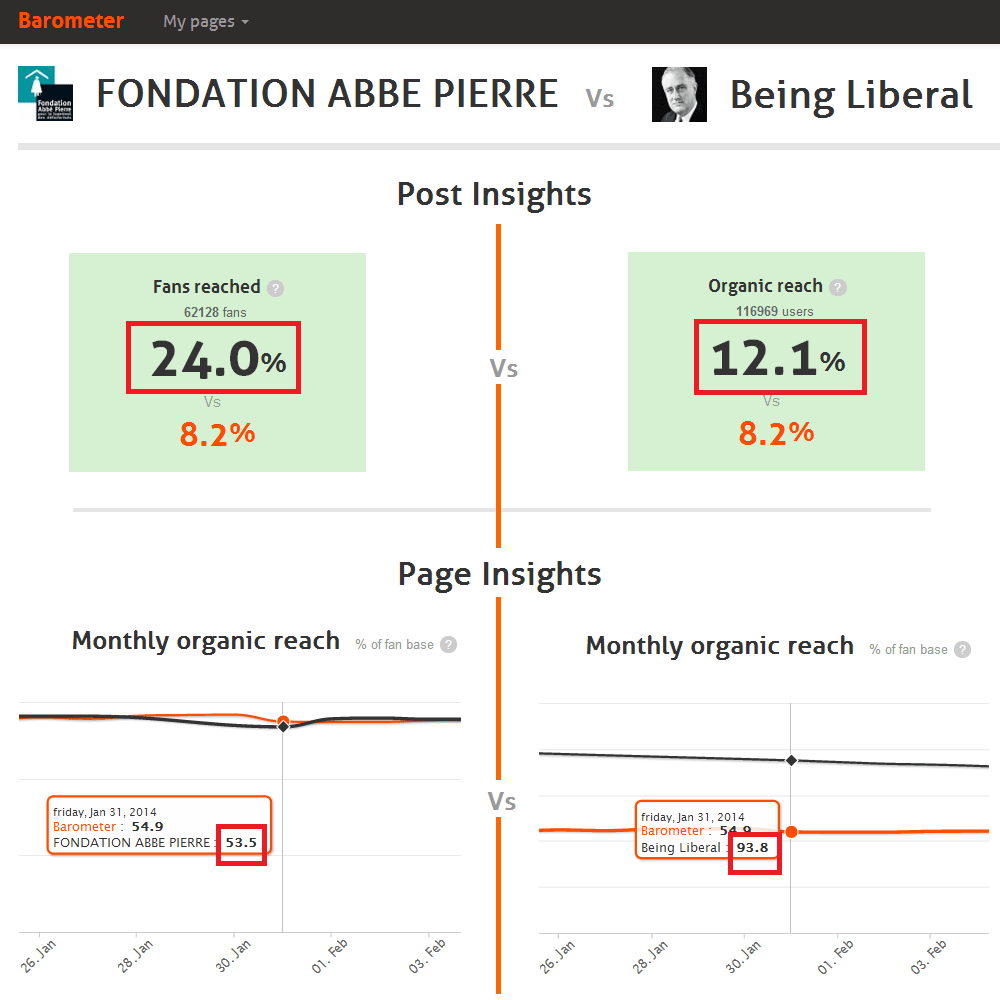
On the left, a nonprofit that has a pretty high fan reach (24% of fans are reached for each post!). On the right, another nonprofit with a much lower fan reach. However, as the page on the right posts several times a day when the one on the left only posts once a day, the overall page reach is much higher for the one on the right (93% of fans reached on a monthly basis versus 53%). None of these pages are using paid reach, it’s all organic.
Rethink your content strategy
Great content is hard to produce. The chances that you’ll come up with twice as much great content than you are now is highly unlikely. If you were only relying on great content, produced in-house to nurture your Facebook page, you need to change your approach.
First, get ready to spend a little money on that great content you’ve already invested hundreds of dollars (in cash or in your own valuable time) in or you’re wasting your original investment. Then, look at ways to produce more “low cost” content, to keep (or even increase) your brand awareness. Here are a couple of cost (and time) effective ways to achieve that:
Curation to the rescue!
Put a curation process in place. Curation is the cheapest and most effective way to produce more high quality shareable content. There are plenty of experts in your industry, and they all invest a ton of time crafting great content. Having the right curation tools (https://www.razorsocial.com/content-curation-tools/) in place will allow you to spot them quickly and share the best on your page. Sure, you’re not driving traffic to your blog or getting more clients, but remember- the goal here is brand awareness, created by providing high quality content for your audience to see.
Share your business’ day to day life!
Include Facebook in every event of your daily business life. Having a great lunch discussing industry related topics with a client or partner? Attending a nice conference? Did one of your support agents have a fun chat with a client this morning? Whatever it is, a lot of things happen in your office or around it that are worth sharing with the fans who know you.
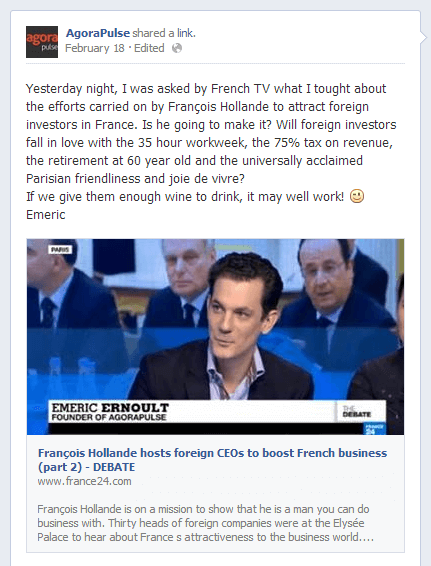
Speaking at a conference, attending one, or even appearing on a TV or radio show are events you definitely want to share with your audience. This kind of posts takes less than 5 minutes to do, you just need to add them in your daily routine.
“Nuggets” of content can be good for your Facebook page’s health!
It’s not all or nothing. Don’t just produce “great” content or go home. Start producing quick nuggets of content along with your in depth blog articles which delve as deep as possible into exclusive analysis of a subject. Like this article! 8-D. Share a quick fact, an expert opinion (or question) about the latest relevant news in your industry, a thought about an interesting case someone shared with you at lunch… etc.
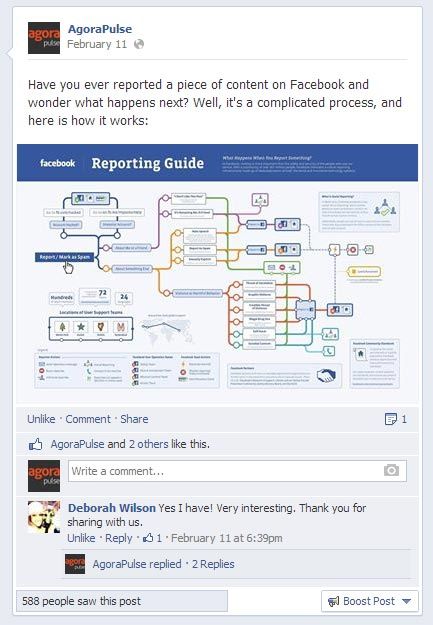
Not all needs to be “breaking news”. Seeing and interesting piece of information that may be worthwhile to share with your fans? Just hit share and add a small introduction. This kind of content is super easy to create and you’re probably already running into dozens of pieces like this every week.
These nuggets will create and sustain brand awareness. Let your audience see you and the benefit you’re bringing. Small bites will do the job.
Revive evergreen content!
Republish evergreen content on a regular basis! Your greatest and most costly pieces of content will only reach and impress the people who will are available to check them out at the time you publish them, so re-share them, again and again. Once a week is a decent schedule for a great blog post filled with data, insights and tips that are as valid today as they were when originally published! Jon Loomer does this a lot and it’s one of his tricks that allows him to post 2 or 3 times daily.
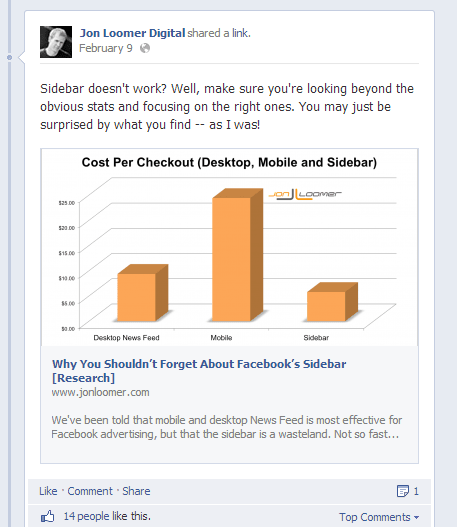
Here’s a post on Jon Loomer’s Facebook page published on February 9th about a blog post originally published on November 18th, still getting likes, shares and clicks! Don’t waste your evergreen content, it deserves to be shared again and again.
Curate great content from others, use your latest industry news to question or get feedback from your fans, be prolific about what’s going on in your office and leverage your evergreen content. Your. Reach. Will. RISE!
Your turn, what are the tips and tricks you have put into place to keep your Facebook presence on top of the charts?


